If you thought we were going to start this article with the age old dad joke about chickens and chicks, you’re wrong. We’re all about chicken breeds here!
As a result, we have written a comprehensive guide on the best chicken breeds that are perfect for small and big backyards, and easy to keep. In doing so, we used criteria such as their ability to lay eggs, how easy the breed is to find and purchase, and how friendly they might be toward children.
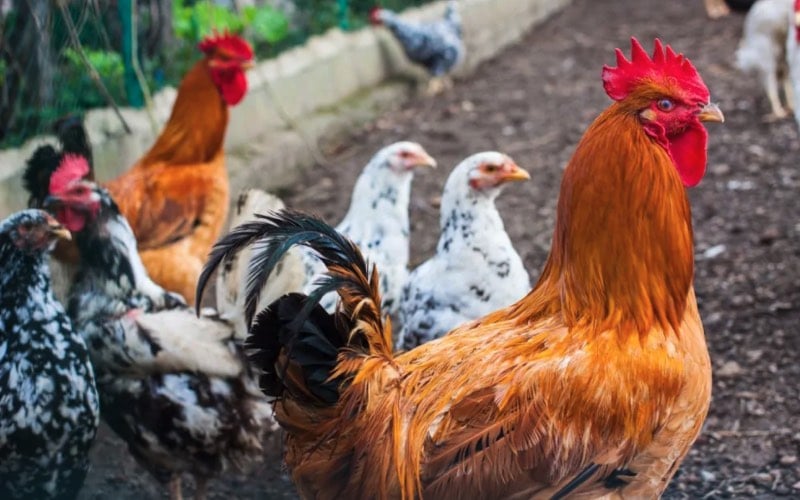
Without further cuck-ado, here are the chicken breeds we’ve been chick’n out!
The Best Chicken Breeds to Have in Your Flock
The easiest way to understand the world of chickens if you’re a beginner is to classify them according to the type of eggs they lay.
As a result, most chickens can be divided into brown, colored, and white layers. That is the color of the eggs they lay.
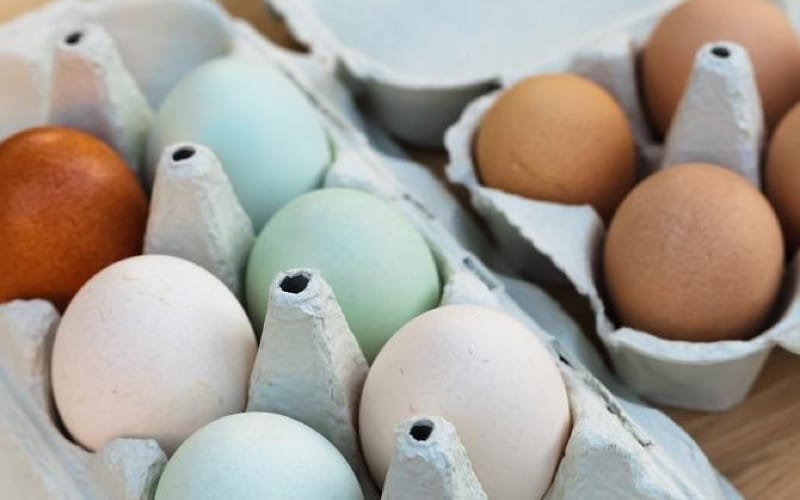
However, chickens are also classified according to other criteria such as size – bantam chickens – or how prized they are for their meat – the good old rotisserie meat chickens.
Other categories include crested, ornamental, rare, and unusual breeds. Below you will find examples of chickens belonging to all these chicken breeds.
Brown Egg-Laying Chickens
You can never get enough brown chicken eggs, the still all-time favorite that we happily share with friends and family. Brown eggs, green-brown eggs, tinted eggs, and double dark brown eggs – we love them all!
Australorp Chicken Breed
A beautiful chicken breed that you will recognize immediately given the fact that the chickens themselves are jet black!
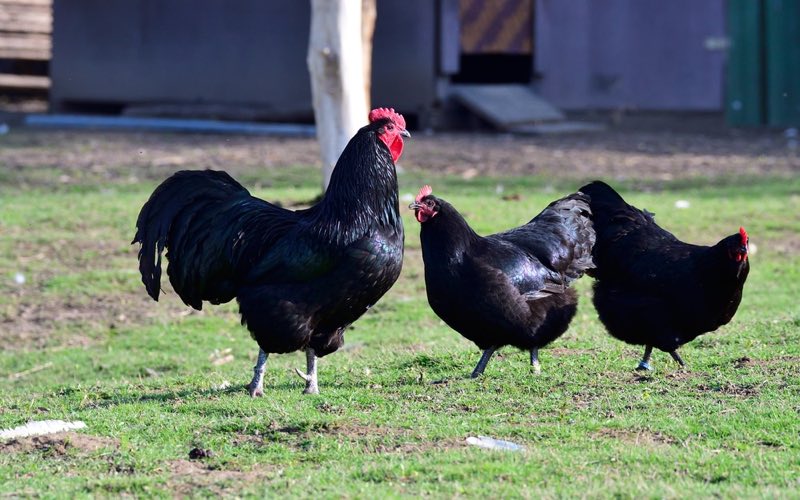
However, the thing you’ll love the most as a chicken breeder is just how incredible they are at laying eggs. When properly cared for, Australorps can lay some 250 eggs per year. They are light brown in color and very tasty.
The record was set by a hen that laid a staggering 364 eggs in a single year without the help of any artificial light.
Australorp Chicken Breed Characteristics & Traits
| Primary use: | Meat & Eggs |
| Annual Egg production: | 250 eggs |
| Egg size: | Large |
| Weight: | 4.85 – 9 lbs |
| Temperament: | Hardy, Docile |
| Breed color/variety: | Blue, Black, White |
| Egg color: | Brown |
Black Star & Red Star Chickens
Both these chicken breeds are hybrids from other chicken breeds.
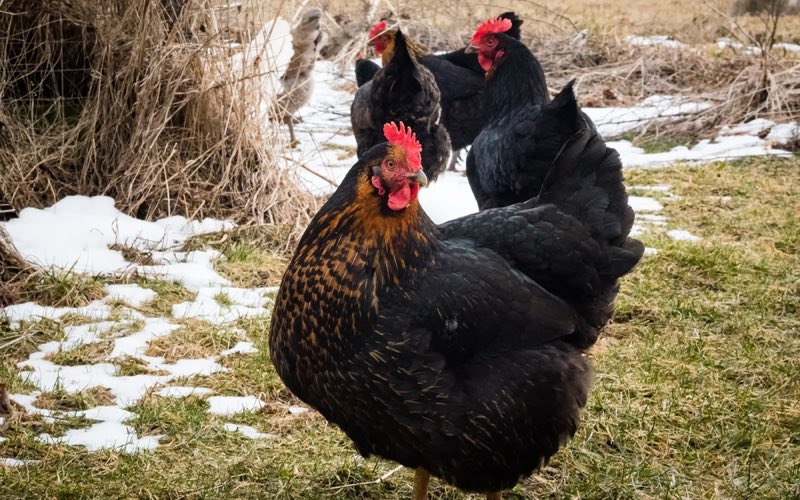
The difference between a Black Star vs Red Star Chicken you’re asking? A Black Star (aka Black Sex-linked) is a cross between a Rhode Island Red and Barred Plymouth Rock while a Red Star (aka Red Sex-linked) is a cross between a Rhode Island Red and a White Leghorn.
They were bred in such a way so that, when they hatch, the color matches the sex of the chicken. As a result, the entire process is far easier for you, especially if you’re a beginner. No surprises there.
Not to mention just how fantastic they are as layers. A black- or red star chicken can produce up to 300 eggs in a single year!
Black Star Chicken Breed Characteristics & Traits
| Primary use: | Eggs |
| Annual Egg production: | 300 eggs |
| Egg size: | Large |
| Weight: | 5.1 – 9.5 lbs |
| Temperament: | Friendly |
| Breed color/variety: | Red, Black |
| Egg color: | Light Brown |
Brahma Chickens
This chicken breed is also known as the King of all Poultry. It’s far larger than other chickens, stronger, and very hardy if you live in a winter climate.
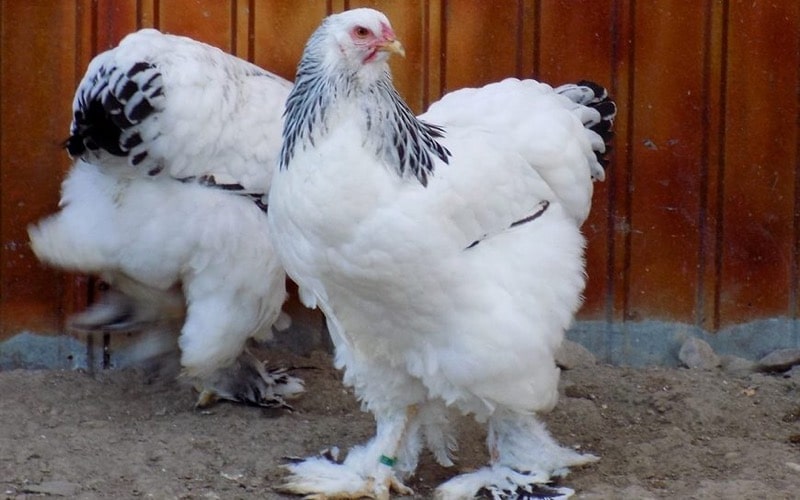
But the best thing of all about Brahma chicken breeds is that they lay most of their eggs between October and May. Which means eggs in winter for you and your family.
Brahma Chicken Breed Characteristics & Traits
| Primary use: | Meat |
| Annual Egg production: | 150 eggs |
| Egg size: | Large |
| Weight: | 9.9 – 12 lbs |
| Temperament: | Calm, Friendly |
| Breed color/variety: | Dark, Buff, Light |
| Egg color: | Brown |
Colored Egg Laying Chickens
As a chicken owner, the thing that makes me most happy in the mornings is opening the door to our chicken coop and finding a rainbow of colored chicken eggs.
Unfortunately, you’re not going to find a golden egg anytime soon but I’ve seen a variety of chocolate, blue, green, pink, and yellowish eggs beside the regular whites and browns.
Ameraucana Chickens
This breed was developed in the United States in the 60s but descended from a breed brought from Chile called Araucanas chickens.
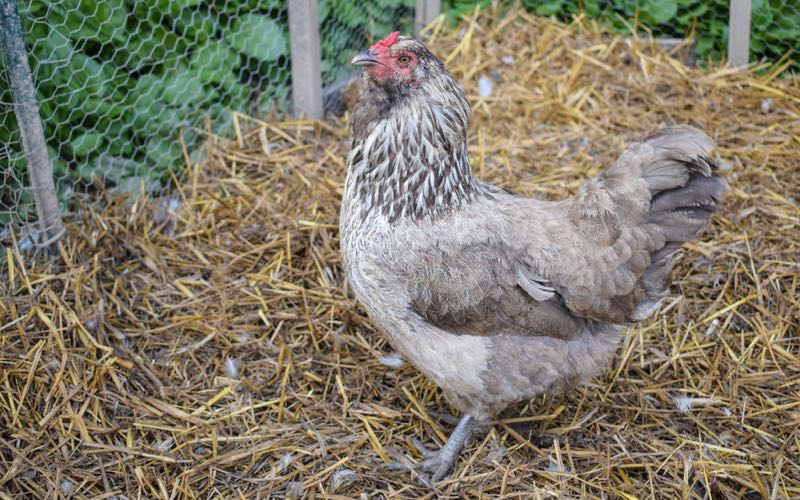
These chicken breeds lay pale blue eggs, which will delight your children and make for a beautiful basket.
Ameraucana Chicken Breed Characteristics & Traits
| Primary use: | Meat & Eggs |
| Annual Egg production: | 250 eggs |
| Egg size: | Medium |
| Weight: | 4.5 – 6.5 lbs |
| Temperament: | Broody |
| Breed color/variety: | Black, Blue, Brown Red, Buff, Silver, Wheaten, and White |
| Egg color: | Blue, Green |
Tip – this breed is only available for purchase at selected breeders, and not at your local store!
Easter Egger
There are two reasons why you will love Easter Egger chickens – they lay blue, green, and brown eggs and lots of them! Up to 280 per year, to be more factual. They are a mix of different breeds and that’s why they’ll give you blue-green eggs thanks to that Araucana blue egg gene.
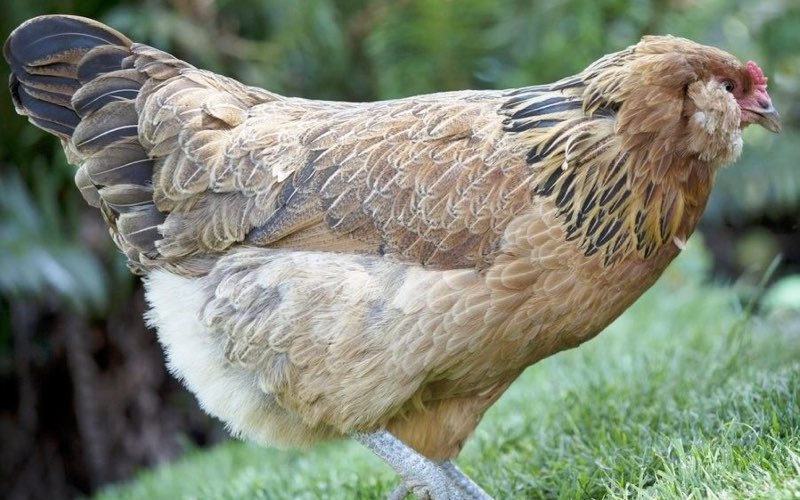
Not to mention that this breed is super easy to find at any store in your local area, which makes them a great addition to your backyard.
Eastern Egg Chicken Breed Characteristics & Traits
| Primary use: | Meat & Eggs |
| Annual Egg production: | 280 eggs |
| Egg size: | Small |
| Weight: | 6 – 7 lbs |
| Temperament: | Docile, Hardy |
| Breed color/variety: | Different variety of colors |
| Egg color: | Green, blue, cream, pinkish |
Olive Egger
Another hybrid egg producer is the Olive Egger chickens and as their name suggests, these chicken breeds lay olive green eggs. The exact shade will always depend on their parentage, so feel free to experiment.
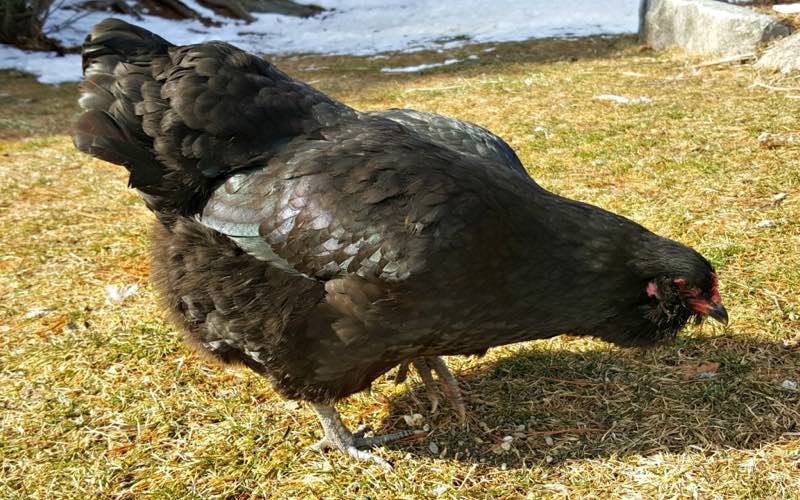
This chicken will lay up to 200 eggs each year, although the amount will vary, since the breed is a hybrid.
They also make a fun breed to raise as the chickens themselves are curious, very lively, and hardy in any weather and climate.
Olive Egger Chicken Breed Characteristics & Traits
| Primary use: | Meat & Eggs |
| Annual Egg production: | 180-200 eggs |
| Egg size: | Large |
| Weight: | 5.5 – 7 lbs |
| Temperament: | Docile |
| Breed color/variety: | Different variety of colors |
| Egg color: | Olive |
White Layer Chicken breeds
While brown layered chicken eggs have a little more Omega-3 fatty acids, the difference with white eggs is almost negligible and the appearance is the differentiator that seem to matter to egg buyers.
White eggs however are laid by white-feathered chickens with white or light-colored earlobes while the brown ones are laid by brown-feathered chickens with red earlobes.
Andalusian Chicken Breeds
Seeing as they are indigenous to Spain, these Andalusian chickens thrive in a warmer climate.
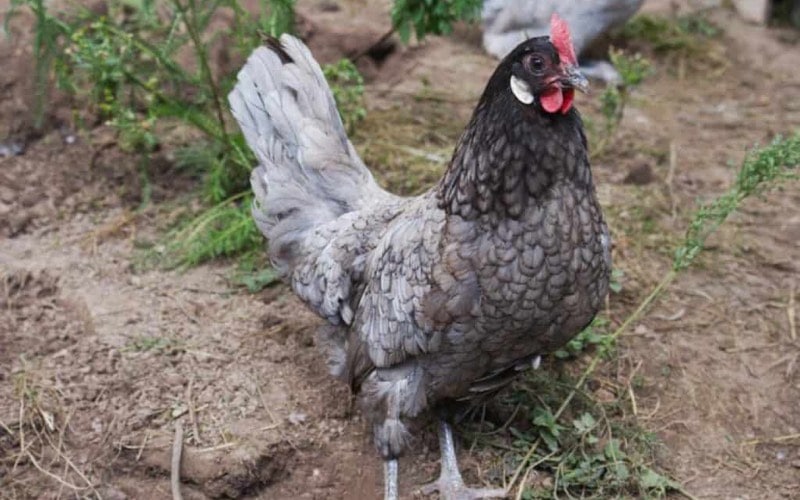
They also love to get out and move a lot. As a result, you won’t be able to keep them locked up in a coop. Therefore, you will need a large backyard where they can move to their heart’s desire.
Andalusian Chicken Breed Characteristics & Traits
| Primary use: | Eggs |
| Annual Egg production: | 165 eggs |
| Egg size: | Medium |
| Weight: | 3.8 – 8 lbs |
| Temperament: | Active, Flighty, Noisy, Gentle |
| Breed color/variety: | Blue, Black, Splash |
| Egg color: | White |
Ancona Chickens
The Ancona chicken breeds come from Italy, but they live in colder climates as well.
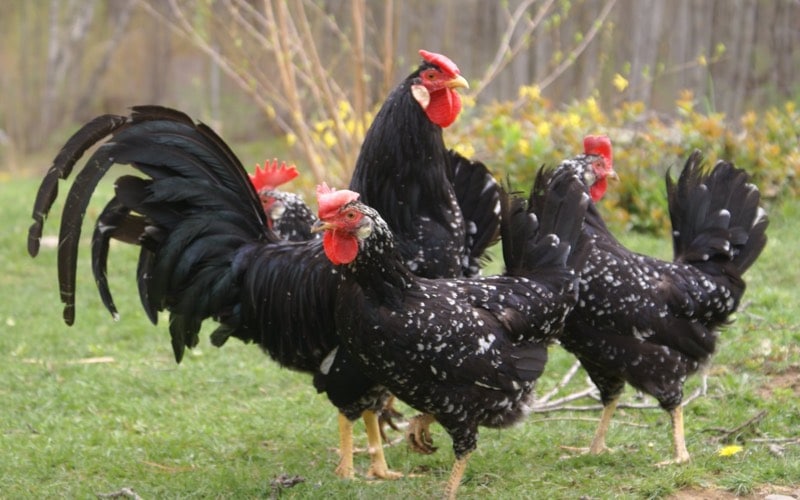
They are a medium layer, coming around at 220 eggs per year. Just like their Spanish sisters, they love to run, they are hardy, and very rustic chickens.
Ancona Chicken Breed Characteristics & Traits
| Primary use: | Eggs |
| Annual Egg production: | 180-220 eggs |
| Egg size: | Large |
| Weight: | 4.5 – 6 lbs |
| Temperament: | Active, Wild, Noisy |
| Breed color/variety: | Tipped, Black, Splash |
| Egg color: | White |
Gournay Chickens
Completing our journey through Europe is a chicken from France. Not just that, but these chicken breeds are quite old, some saying they date back to the Vikings themselves.
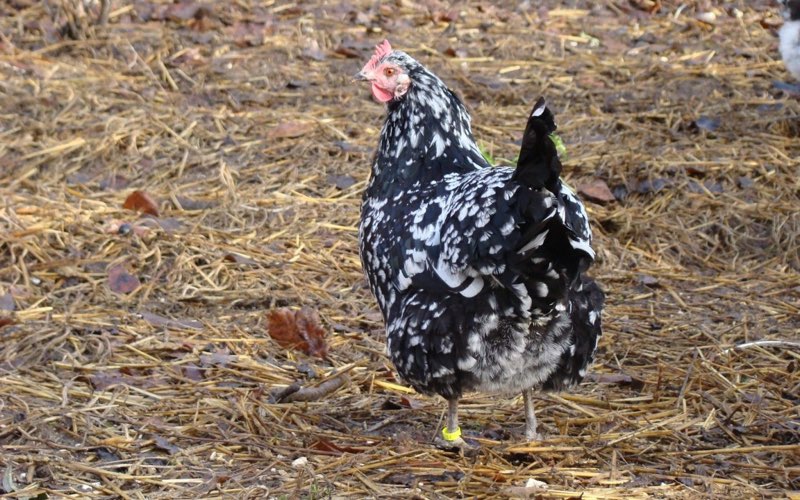
These Gournay Chickens lay approximately 3 eggs per week and love to relax in the coop.
Gournay Chicken Breed Characteristics & Traits
| Primary use: | Eggs |
| Annual Egg production: | 150 eggs |
| Egg size: | Large |
| Weight: | 4 – 7 lbs |
| Temperament: | Active, Wild, Noisy |
| Breed color/variety: | Tipped, Black, Splash |
| Egg color: | White |
Bantam Type Chickens
A bantam chicken is a smaller miniature version of a regular chicken and is around half or 2/3’s the size of regular birds. They can vary from one half to two thirds the size of regular birds.
In total the American Bantam Association lists over 400 varieties of bantam chickens and while they look beautiful this breed is not often used for egg or meat production.
Barbu D’uccle
The next stop is Belgium for this small chicken breed from Brussels. The Barbu d’Uccle Chickens (in Dutch: Ukkelse Baardkriel) is a Belgian breed of bearded bantam chicken. They are the perfect addition to the flock if you have children because they are sweet and very friendly.
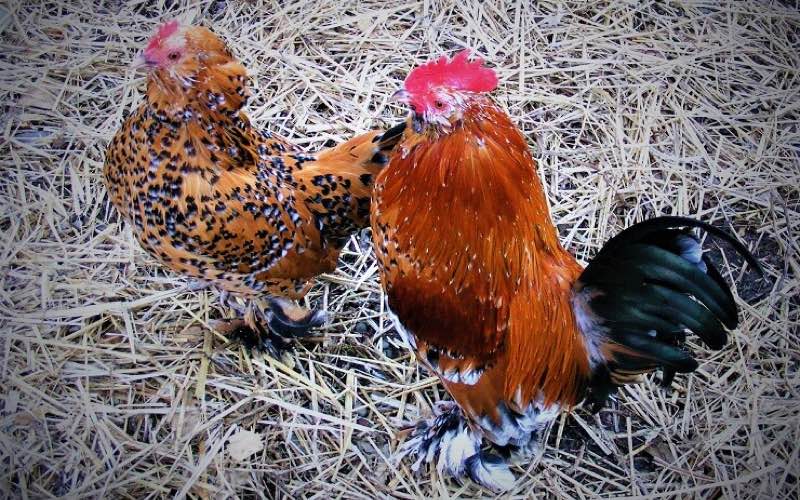
Most breeders describe them as having lovely personalities. They lay small and cream-colored eggs that will also delight your children.
Barbu D’uccle Chicken Characteristics & Traits
| Primary use: | Ornamental |
| Annual Egg production: | 100 eggs |
| Egg size: | Small |
| Weight: | 1.2 – 1.75 lbs |
| Temperament: | Calm, Friendly |
| Breed color/variety: | Bearded White, Mille Fleur |
| Egg color: | Tinted Cream |
Booted Bantam
A gorgeous chicken with a lovely set of feathered boots that comes in more than 20 colors. The most common one is called the Lemon Millefleur and is usually found in England.
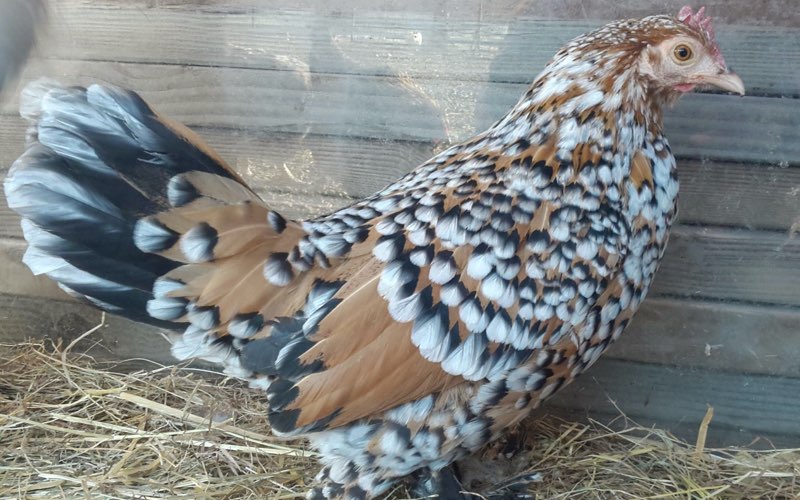
Note – the Booted Bantam is almost exclusively a chicken for exhibition and people keep them as pets.
Booted Bantam Characteristics & Traits
| Primary use: | Eggs |
| Annual Egg production: | 160 eggs |
| Egg size: | Small |
| Weight: | 1.65 – 1.9 lbs |
| Temperament: | Friendly, Calm |
| Breed color/variety: | Golden Neck, Blue, gray |
| Egg color: | White, Tinted |
Pekin Bantam
As the name suggests, these Pekin Bantam chicken breeds are Chinese in origin. There is a legend around them that says they were originally stolen by English soldiers from the private aviary of the Emperor of China!
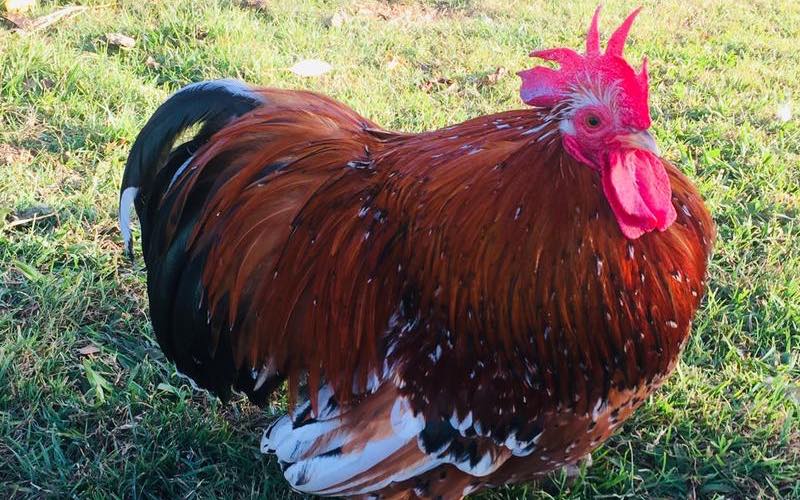
Despite the fact that they don’t lay many eggs, Pekin Bantams are gorgeous and make great adoptive mothers for eggs and chickens.
Pekin Batams Characteristics & Traits
| Primary use: | Ornamental |
| Annual Egg production: | 150 eggs |
| Egg size: | Large |
| Weight: | 1.2 – 1.55 lbs |
| Temperament: | Docile |
| Breed color/variety: | Different variety of colors |
| Egg color: | Brown |
Meat Chickens
Broiler types of chicken breeds make great meat chickens because they grow faster than chickens that are raised for the purpose of egg-laying and chickens that are considered dual-purpose.
Barbezieux
Being the tallest chicken breeds in Europe, Barbezieux chickens are perfect both in your backyard and on the table. You can keep a few in the flock if you are interested in eggs because they do lay a good amount.
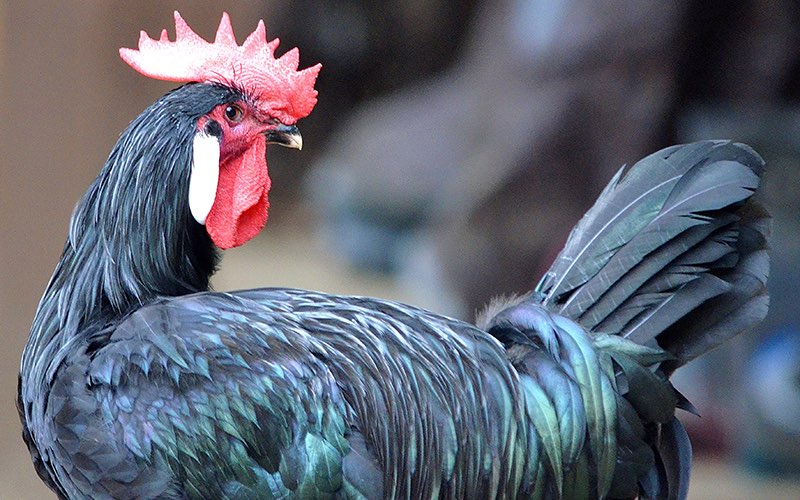
However, the chickens are bred especially for their meat. It is firm and has a special flavor to it, with gamey undertones, and it is one of the best- tasting meat chickens in the world
Barbezieux Chicken Breed Characteristics & Traits
| Primary use: | Meat |
| Annual Egg production: | 160 – 200 eggs |
| Egg size: | Large |
| Weight: | 7.8 – 10 lbs |
| Temperament: | Docile, Proud |
| Breed color/variety: | Black |
| Egg color: | White |
Cornish Chickens
Who hasn’t heard of Cornish Game Hens? Now you can grow them yourself in your backyard or on your farm.
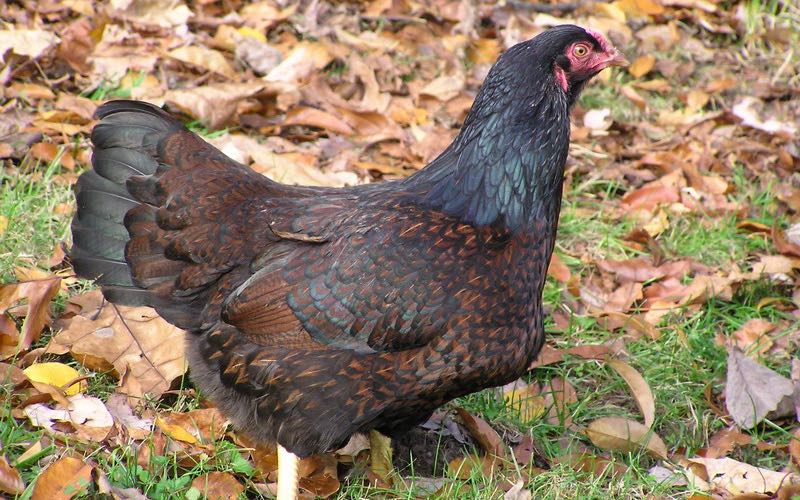
The Cornish chicken birds are muscular yet tender and they produce flavorful meat that will remind you of the forest they once came from.
Cornish Chicken Breed Characteristics & Traits
| Primary use: | Meat |
| Annual Egg production: | 180 eggs |
| Egg size: | Small to Medium |
| Weight: | 7.5 – 10.5 lbs |
| Temperament: | Friendly, Calm, Bears confinement well, Quiet |
| Breed color/variety: | Dark, Jubilee, Blue- and White Red laced |
| Egg color: | Brown |
Ixworth
Another chicken breed from England is the Ixworth chicken. The hen is pure white, produces a good amount of eggs, and will yield a hearty feed.
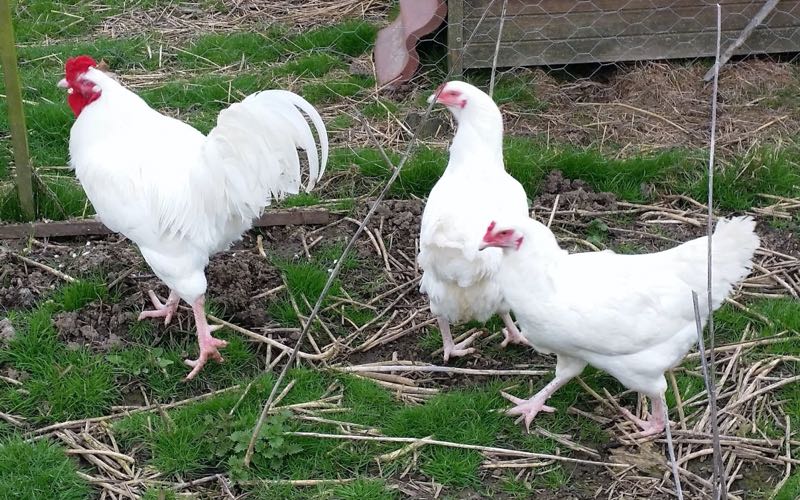
Keep in mind that it loves to forage, so you won’t be able to keep it in the coop.
Ixworth Chicken Characteristics & Traits
| Primary use: | Meat & Eggs |
| Annual Egg production: | 270 eggs |
| Egg size: | Medium |
| Weight: | 6 – 9 lbs |
| Temperament: | Docile |
| Breed color/variety: | Pure white |
| Egg color: | Tinted |
Crested Types of Chickens
Crested chickens are another type of chicken in the ornamental group of chicken breeds, characterized by a tuft of elongated feathers on the head like it’s dressing up for you.
The Crevecoeur
The Crevecoeur chicken is one of the oldest breeds in France and getting its name from a French city, Crevecoeur stands for ‘broken heart.’
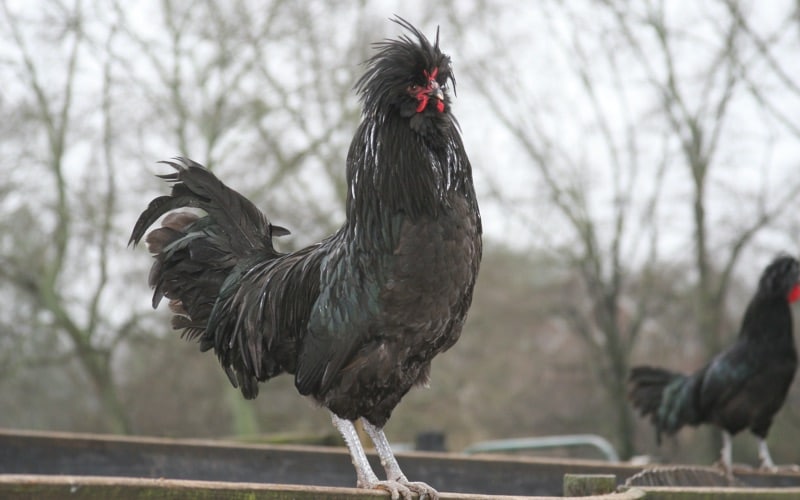
You will love these chickens’ personalities as they are mild, active yet very peaceful. They only lay around 120 eggs per year, but they are fantastic as a meat bird.
Crevecoeur Chicken Breed Characteristics & Traits
| Primary use: | Ornamental |
| Annual Egg production: | 120 eggs |
| Egg size: | Medium |
| Weight: | 6.5 – 9 lbs |
| Temperament: | Active, Peaceful |
| Breed color/variety: | Black |
| Egg color: | White |
The Polish
Bred almost exclusively as an ornamental bird, these chicken breeds are very shy and fearful. Therefore, the Polish chicken won’t get along with you or your children and appreciate their personal space.
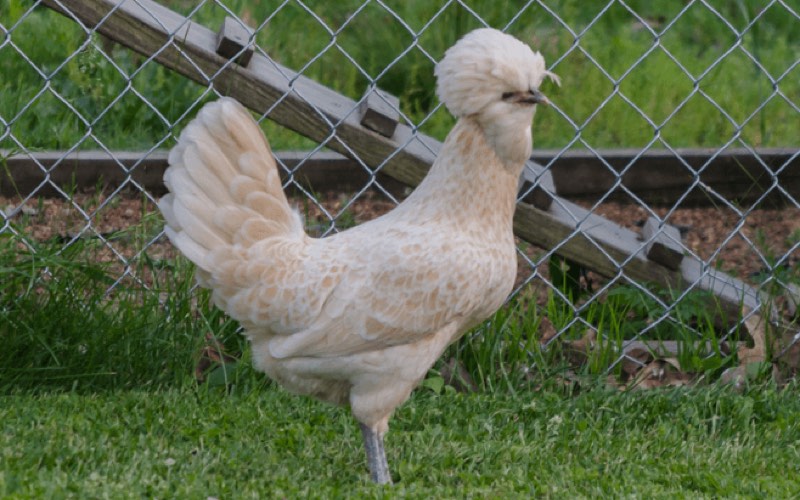
Apart from that, they are always in danger of being attacked by aerial predators since their crest obscures their vision.
Polish Chicken Breed Characteristics & Traits
| Primary use: | Ornamental |
| Annual Egg production: | 200 eggs |
| Egg size: | Medium |
| Weight: | 4.4 – 6.1 lbs |
| Temperament: | Friendly, Quiet |
| Breed color/variety: | Non-Bearded White, Bearded Buff Laced |
| Egg color: | White |
The Sultan
If it’s a magnificent looking bird you want for your backyard, the Sultan chicken is the breed you need.
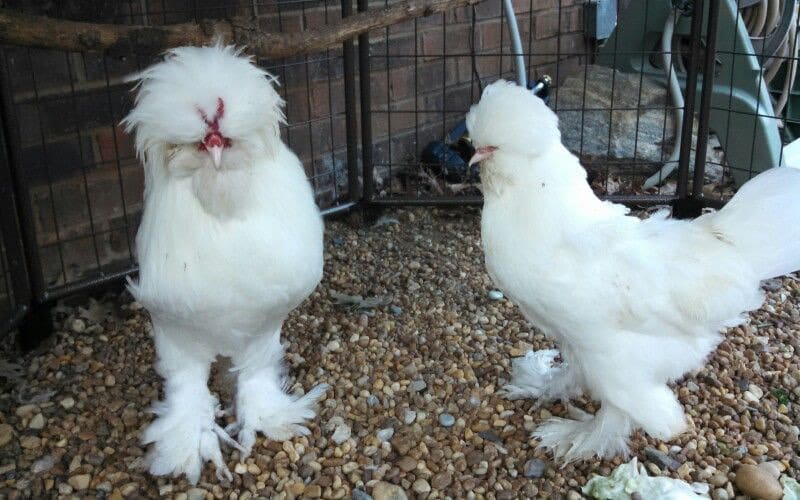
Entirely white and with a crest, a beard, and splendid muffs, the Sultan chicken looks more like a white parrot strutting around your backyard than farm poultry. Plus, it has a happy personality!
The Sultan Chicken Breed Characteristics & Traits
| Primary use: | Ornamental |
| Annual Egg production: | 50 eggs |
| Egg size: | Small |
| Weight: | 4 – 6 lbs |
| Temperament: | Friendly, Docile |
| Breed color/variety: | Blue, Black, White |
| Egg color: | White |
Ornamental Types of Chickens
Ornamental chickens, or show chicken breeds, are the chickens that are raised not because of their meat or egg production but truly for ornamental use because of their fancy and stunning appearances. It’s the show-pony under the chicks.
Silkie Chickens
A very ancient breed that comes from China, Silkies were documented by Marco Polo himself. Therefore, if you want a piece of history in your backyard, a Silkie chicken is the way to go.
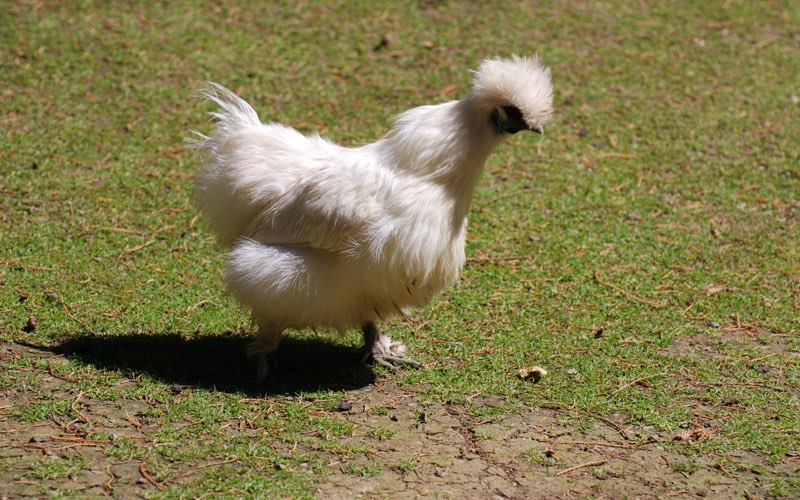
Their white feathers are so beautiful that they feel more like hair, making the Silkie the most beloved of all ornamental chickens. Almost like a pet.
Silkie Chicken Breed Characteristics & Traits
| Primary use: | Ornamental |
| Annual Egg production: | 100 eggs |
| Egg size: | Small |
| Weight: | 2.8 – 4 lbs |
| Temperament: | Friendly, Calm |
| Breed color/variety: | Non-Bearded White, Non-Bearded Partridge |
| Egg color: | Tinted, Cream |
Tip – don’t allow them to get wet! They can catch chills!
Cochin Chickens
Despite being mostly an ornamental bird, the Cochin chicken breed is famous for loving to brood. In fact, they love to brood so much that even the roosters do it. Talk about equality!
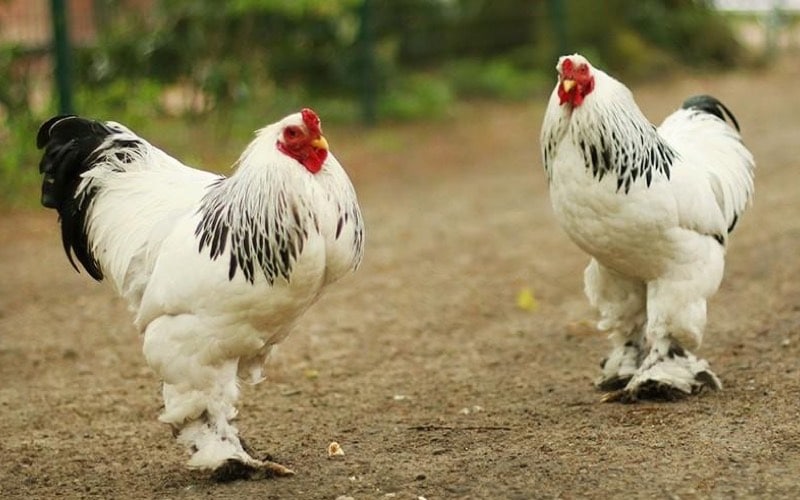
These chicken breeds are covered in an abundance of feathers, which makes them perfect for colder climates. They also have a sweet disposition.
Cochin Chicken Breed Characteristics & Traits
| Primary use: | Ornamental |
| Annual Egg production: | 160 eggs |
| Egg size: | Medium |
| Weight: | 8.8 – 11 lbs |
| Temperament: | Friendly, Calm, Quiet |
| Breed color/variety: | Red, Blue, Brown Red, Brown, Partridge |
| Egg color: | Light Brown |
Rare Chicken Breeds
Besides the common chickens breeds and types use for eggs or meat, there are some ornamental breeds that are either rare to get or very unique in their traits and characteristics.
What makes a breed work for you is an entirely personal choice. If a breed is not as good in one area, it will make up for it in another area, in this case, the rarity of the birds makes it extra interesting for chicken keepers. Do you agree?
Dampierre
The Dampierre chicken is special because it was bred with one single purpose in mind. To recreate an extinct breed of chickens from France. As a result, Dampierres are now dual-purpose chickens, meaning they are great for both meat and eggs. And they resemble an old breed from Normandy very closely.
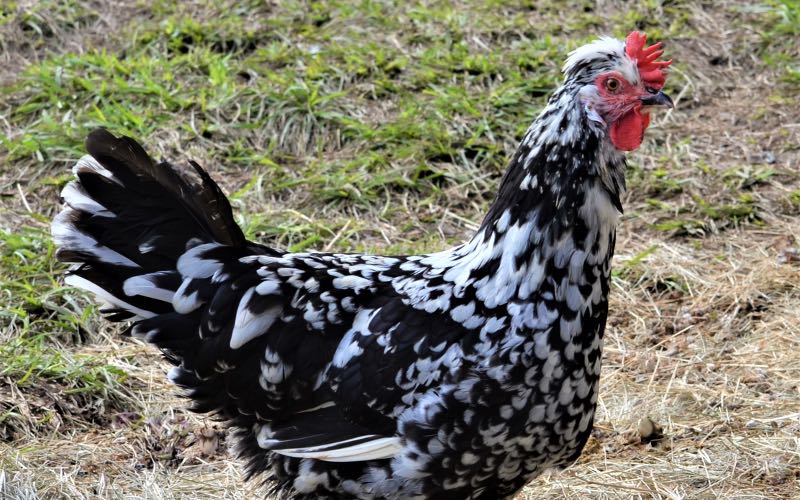
Deathlayer
Why are they special? Because they are one of the most productive chicken breeds you will ever find. They can produce one egg every single day until the day they die. Hen(ce) the name – death layer chickens.
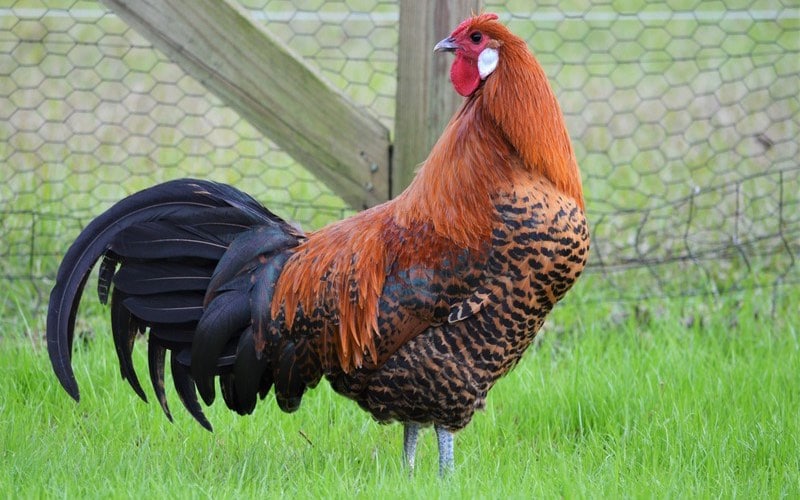
Also, they love to sleep in trees, like flying birds. And they don’t like to be kept in chicken coops.
Unique Types of Chickens
The great thing about having so many great breeds is we could compare their behavior to us and other chickens, the unique traits and sounds they make, eggs, growth rates, and other idiosyncrasies.
Egyptian Fayoumi
Have you ever wondered what kind of fried chicken King Tut might have eaten? There’s a good chance it came from this chicken.
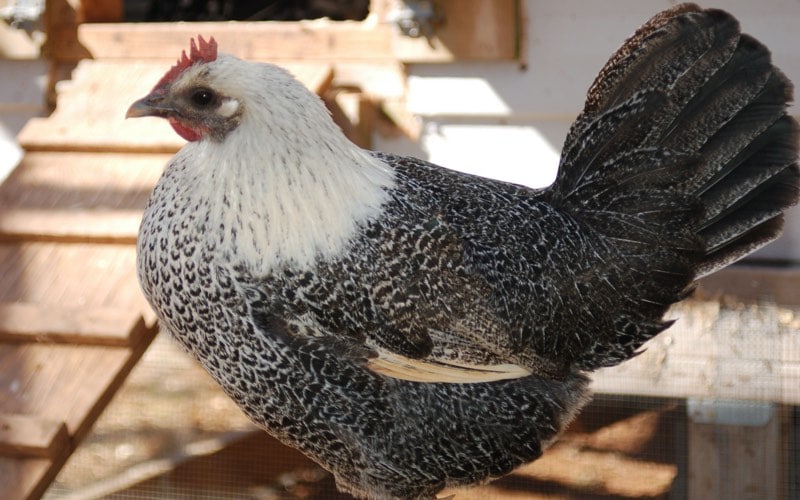
The Egyptian Fayoumi chicken is a 3000-year old breed. Its parent breed is the Sri Lankan jungle fowl which Pharaoh Tutankhamen brought to Egypt by trading cinnamon for it.
Phoenix Chicken Breed
Without a doubt one of the most beautiful chicken breeds you will ever see. Phoenix chickens look like a pheasant and have long, flowing feathers in a striking red, orange, yellow, and gold colors. These ones will make your backyard look like the gardens of Versailles!
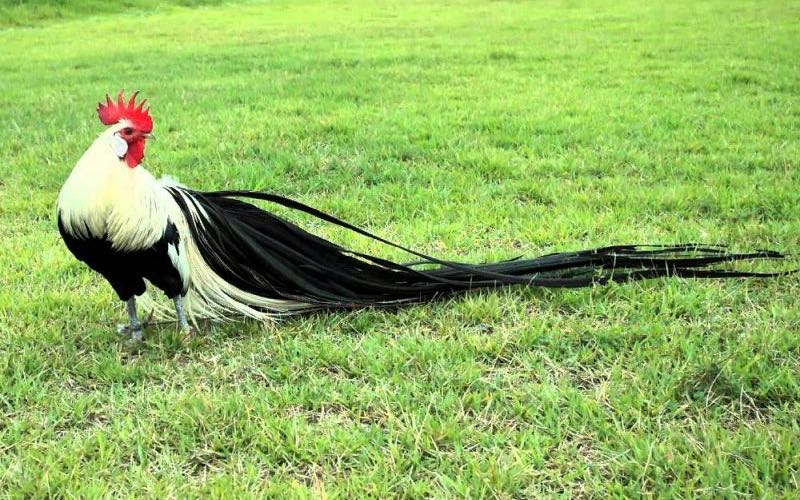
All Your Chicken Breeds Questions Answered
We know just how eager you are to start your own flock! But we also know that you have a lot of questions about chicken breeds. So let’s do a lightning round of chicken FAQs.
What breed of chicken is the friendliest?
According to most breeders, Silkie chickens are the friendliest. They are an ornamental breed and, in fact, they are so friendly that most people keep them as pets!
What is the rarest type of chicken?
The rarest type of chicken is called The Campine. It’s a bantam breed
that is also endangered in Europe. Gold Campines are extremely rare chicken breeds and breeders are trying their best to keep this breed alive.
What is the average life of a chicken?
Depending on the breed, a chicken can live between five and ten years.
Are chickens clever?
There is an age-old stereotype that chickens are not the smartest birds around. That is, in fact, mistaken. Both scientists who have studied different chicken breeds, as well as breeders themselves, can tell you the following.
Chickens are so smart that they are able to count if taught. Not only that, but they can manipulate each other and even try to manipulate humans if they believe they can get something out of it.
Are chickens friendly pets?
It all depends on the chicken breeds. As you may have noted above when we detailed so many breeds for you, chickens are not created equally and their traits and characteristics differ quite a bit.
You also have to take into account the fact that chickens have different personalities. Some might be prone to socializing and even cuddling. While others don’t like to be disturbed and prefer to sleep in trees.
There is also the question of roosters. They don’t behave in the same way as hens. In fact, they are much more aggressive, as it is in their nature to protect both the hens and the chickens. Therefore, you will never be best friends with a rooster.
Can chickens love their owners?
Yes, they can. In fact, studies show that chickens are capable of an entire range of emotions, not just love. This includes empathy, selfishness, lust, jealousy, and rage. Therefore, love is just one of the feelings they have for you as an owner.
Will chickens stay close to home?
Once again, this depends on the chicken breeds. Some prefer to stay as close to the coop as possible, while others are much more active and prefer to run around.
However, if you feed them a balanced diet or healthy protein-rich mealworms, and spread it around their coop, they won’t feel the need to forage. In other words, if the chickens already find all they need within a few steps, they will not get far away from your backyard.
What Are Your Favorite Chicken Breeds?
Chicken breeds come in the tens if not the hundreds. You can find them all around the world and the best way to choose the ones that are perfect for you is to learn as much as you can about them.
Our guide on chicken breeds is a great way to start! While you’re at it, let us know in the comment section below what are your favorite chicken breeds?
Or better yet, which ones are you planning on adding to your flock of chicks?

I am a researcher and I find this very interesting.
Favorite breeds are Silkies and Seramas both are sweet friendly birds
Hey Diane! I love both these two breeds as well! Do you already have chickens yourself? Best, Jiri